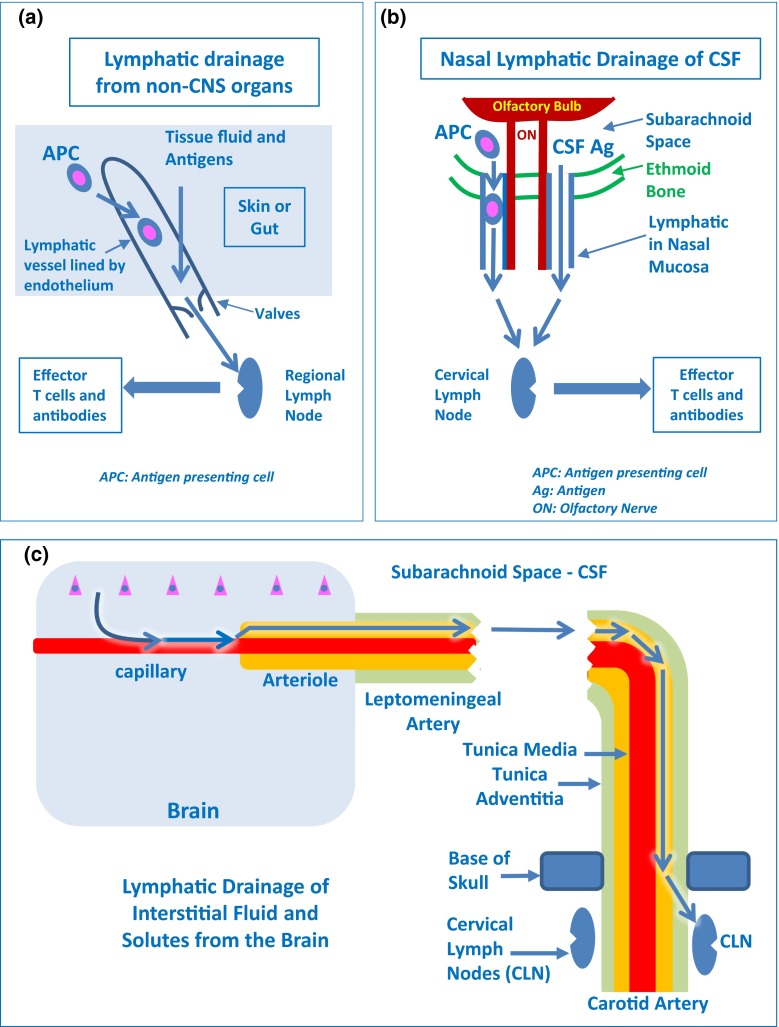Fig. 2.
Pathways for lymphatic drainage of peripheral organs, CSF and cerebral interstitial fluid. a Tissue fluid from skin, gut, and other organs drains into blind-ended lymphatic vessels lined by endothelium. Antigen-presenting cells (APC) also drain by this route to regional lymph nodes. Valves are shown in the lymphatic vessel. b CSF and antigen-presenting cells (APC) pass from the subarachnoid space through channels in the ethmoid bone, alongside olfactory nerves (ON), to enter lymphatics in the nasal mucosa and drain to cervical lymph nodes. CSF also drains via dural lymphatics towards the deep cervical lymph nodes (see text) c Interstitial fluid (ISF) from the brain parenchyma enters basement membranes in the walls of capillaries and then basement membranes between smooth muscle cells in the tunica media of cerebral arterioles and arteries. The route of intramural perivascular drainage for ISF is indicated by blue arrows that track along the walls of intracranial arteries to cervical lymph nodes (CLN) related to the internal carotid artery at the base of the skull

